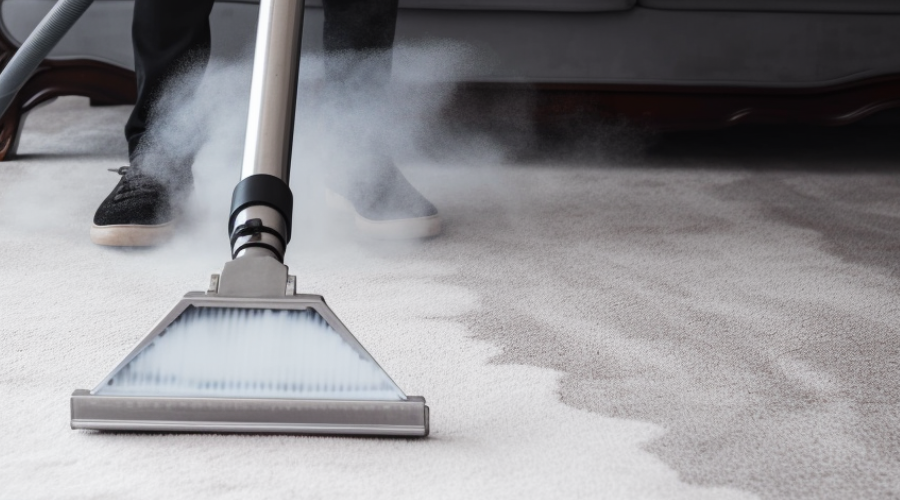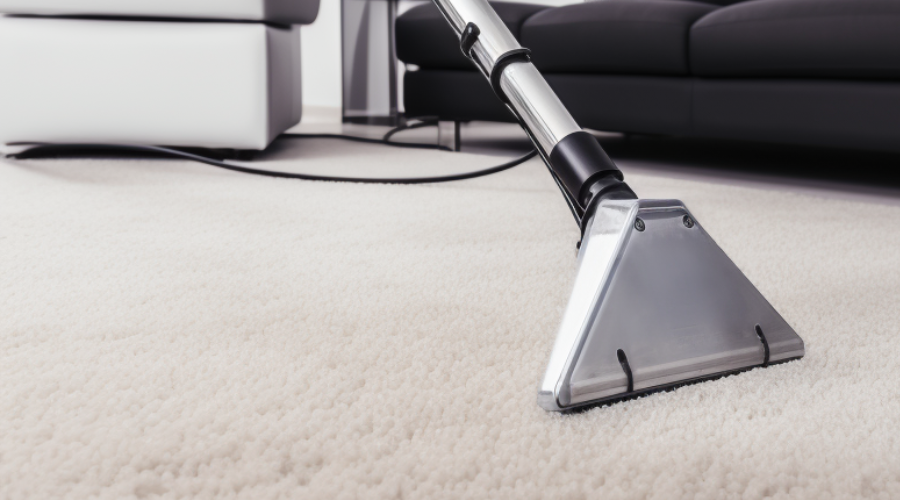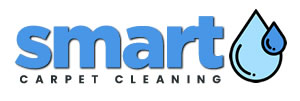Which Carpet Cleaning Method is Best?
Dry, Wet, Or DIY: What’s Best For Your Carpets

When it comes to keeping your carpets clean and extending their life, having them professionally cleaned on a regular basis is key. But with the variety of carpet cleaning methods available, how do you know which is the best option for your home and your carpets?
In this guide, we’ll break down the most common method of cleaning carpets. Exploring how each works, their pros and cons, and which types of carpet they work best on.
Read on for tips on choosing the ideal cleaning method for your needs.
Hot Water Extraction (Steam Cleaning/Wet Cleaning)
Hot water extraction method is considered the most effective method by industry experts. It is an intensive process where heated water and cleaning agents are injected deep into the carpet fibres to loosen and lift dirt. A powerful vacuum is used to immediately extract the water, soil and cleaning agents back out.
The process works by using the heat from the water and agitation from the cleaning wand to loosen the bond between dirt particles and carpet fibers. The pressurised water forces the particle and residues to the surface where they can be vacuumed up before they have a chance to sink back down into the base of the carpet.
Wet carpet cleaning is ideal for deep cleaning heavily soiled carpeted floors. The hot temperatures and strong suction allow it to clean down to the base of the carpet pile. This method works great at lifting stubborn stains, removing allergy triggers and cleaning high traffic areas.
Pros:
- Deepest and most thorough clean
- Lifts and removes stains effectively
- Sanitises carpets
- Extracts filth, dust mites, allergens and bacteria
- Quick drying time
Cons:
- More expensive than other methods
- Longer drying hours than dry cleaning
- Requires heavy equipment
It works well on all types of carpeting, from low pile berbers up to high pile shags and wool carpets. The depth of cleaning action can handle soiled carpets while being gentle enough for delicate fibers.
Dry Carpet Cleaning
It uses a minimal amount of moisture to clean carpets. Specialised machines or absorbent compounds are used to agitate and absorb stains from fibers without saturating the carpet backing or underpad.
The process works by applying a small amount of solution to the carpet. Cleaning machines with counter-rotating brush or absorbent pads are used to work the solution deep into the carpet pile and lift soils to the surface. The grime and cleaning agents are quickly extracted through suction without any excess moisture left behind.
It is best for lightly soiled, low-wetness carpets. It can lift surface level filth without over-wetting the carpet. The fast dry make it ideal for commercial settings that need carpets cleaned without taking them out of service.
Pros:
- Leaves almost no moistness behind
- Fast drying
- Low risk of mould or mildew
- Can clean without moving furniture
- Gentle on delicate fibers
Cons:
- Less effective on heavy soiling
- May not penetrate to base of carpets
- Multiple passes may be needed
The minimal dampness used makes dry cleaning methods for all types of carpeting. It is effective at routine maintenance, surface cleaning, and stain removal. For heavily soiled carpets, wet cleaning may be required.
DIY Carpet Cleaning
It refers to at-home cleaning methods done by the homeowner without hiring professionals. This typically involves using household carpet cleaners and rental units from hardware stores.
Common DIY methods include:
- Carpet shampooers – Foam shampoos are worked into carpets then vacuumed up along with lifted gunk.
- Portable unit steam cleaners – Heated water and cleaning solution are forced into carpets then vacuumed back up.
- Cleaning sprays – Detergent-based sprays are applied then scrubbed before being blotted and dried.
DIY cleaning allows you to tidy carpets on your schedule and budget. It works well for routine cleaning of lightly trafficked and moderately soiled carpets.
Pros:
- More affordable than hiring professionals
- Clean on your own schedule
- No stranger in your home
Cons:
- Inconsistent results
- Longer dry times
- Powerful equipment limitations
- Labor intensive
DIY may not effectively deep clean heavily soiled high traffic areas. Without professional tools and experience, problems can be difficult to remove completely.
For best results, DIY cleaning is recommended for cleaning of low-pile and some medium-pile carpets without excessive staining issues. Heavily trafficked areas with embedded marks still benefit from occasional professional steam carpet cleaning.
DIY Problems
While convenient and more affordable, DIY carpet cleaning does come with some potential downsides and risk of problems if not done properly:
- Overwetting – Home carpet cleaning often does not have the powerful vacuum extraction abilities of professional truck mounts. It can be easy to oversaturate your carpets, which leads to lengthy period of drying and potential mold growth.
- Residue – Without the right cleaners and gear, DIY cleaning can leave sticky detergent residue in the carpets that attract soil faster. Professional products are designed to fully rinse away.
- Damage – Improper use of rental equipment or harsh grocery store cleaning products can damage delicate carpet fibers. Bleach and other strong chemicals lead to discoloration.
- Reappearing stains – DIY cleaners lack the chemistry knowledge and tools to fully remove spots and their causes. They may wicked back up over time without full extraction.
While minor maintenance cleaning is fine, relying solely on DIY can lead to moisture issues, accelerated resoiling and permanent damage over time. For deep-down restorative cleaning, call the professionals at Smart Carpet Cleaning Gold Coast.
Are the Chemicals Used Safe?
When hearing the term “chemicals”, it’s natural to have some safety concerns around what is being applied to your carpets. Fortunately, most carpet cleaning solutions used today are non-toxic, earth-friendly and safe for families and pets when used properly.
Reputable professional carpet cleaners only utilise special cleaning agents that meet strict industry safety regulations. The Carpet and Rug Institute (CRI) maintains a list of over 2,500 cleaning products certified under their Seal of Approval program for carpet safety and effectiveness.
Harsh Chemicals to Avoid
While professional cleaners use safe, non-toxic chemicals certified for cleaning use, some DIY cleaners contain concerning ingredients you may want to avoid using on your carpets:
- Bleach – Can lead to carpet discoloration and fiber damage over time.
- Ammonia – Reacts poorly with carpet cleaning agents leading to a sticky residues.
- Oxygen bleaches – Contain low levels of hydrogen peroxide which can discolor carpets with prolonged use.
- Optical brighteners – Temporary brightening agents that degrade fabric faster.
- VOCs – Volatile organic compounds that release hazardous fumes. Look for low-VOC cleaners.
- Toxic solvents – Chemicals like formaldehyde, toluene, xylene and benzene are toxic and require hazmat disposal.
- Carcinogens – You should avoid ingredients linked to cancers as a precautionary measure.
Always check the ingredients before using any store-bought cleaner on your carpets. For optimal safety and cleaning results, choose an eco-friendly cleaner specifically designed for use on soft surfaces like carpets and upholstery.
How to Extend the Lifespan of Your Carpets
With the right care, you can enjoy beautiful, long-lasting carpets in your home for years before needing to replace them. Here are pro tips for maximising the lifespan of your carpet investment:
Regular Vacuuming
Frequently removing surface dirt before it works its way below the carpet surface slows down abrasive soiling on fibers. Aim to vacuum heavy traffic areas daily and entire carpeted home at least twice a week.
Quick Attention to Spills
Promptly blot liquid spills then rinse with water to prevent staining and permanent sticky residuals from setting it. This preserves carpet appearance.
Regular Cleaning
Carpet steam cleaning every 6-12 months removes embedded soils that accelerate carpet wear. It restores texture too.
Rotate Area Rugs
Periodically move area accent rugs to distribute wear in heavy traffic zones. This prevents uneven permanent traffic lanes over time.
Use Carpet Protectors
Plastic and fabric protectors under rolling office chairs and furniture legs distribute pressure and reduce crushing damage to fibers.
Follow these pro guideline for carpets that stay fluffy, soft and stain-free for over a decade. Seek help quickly for spills too challenging for DIY removal.

Conclusion
Keeping carpets pristine goes a long way in improving indoor air quality, reducing allergens, preserving appearance and extending the usable life of flooring before needing full replacement.
When you evaluate the popular carpet cleaning methods, consider factors like degree of soiling, carpet construction, needed period of time, cost and convenience to determine if steam cleaning, dry, bonnet or DIY alternatives fit best for each situation.
For lightly soiled carpets, dry cleaning and some DIY methods provide adequate routine maintenance. But for deeper, restorative cleaning that removes embedded stains, professional steam cleaning method is the gold standard.
Educating yourself on the various carpet cleaning techniques available along with how well each works on different carpet types allows you to make the soundest cleaning choices each step of your carpet’s lifecycle. Know when DIY is sufficient versus professional cleaning.
Consistently caring for your carpets ultimately rewards you with healthier indoor air, improved aesthetics and excellent return on your flooring investment as properly maintained carpets grace your home for over a decade.
